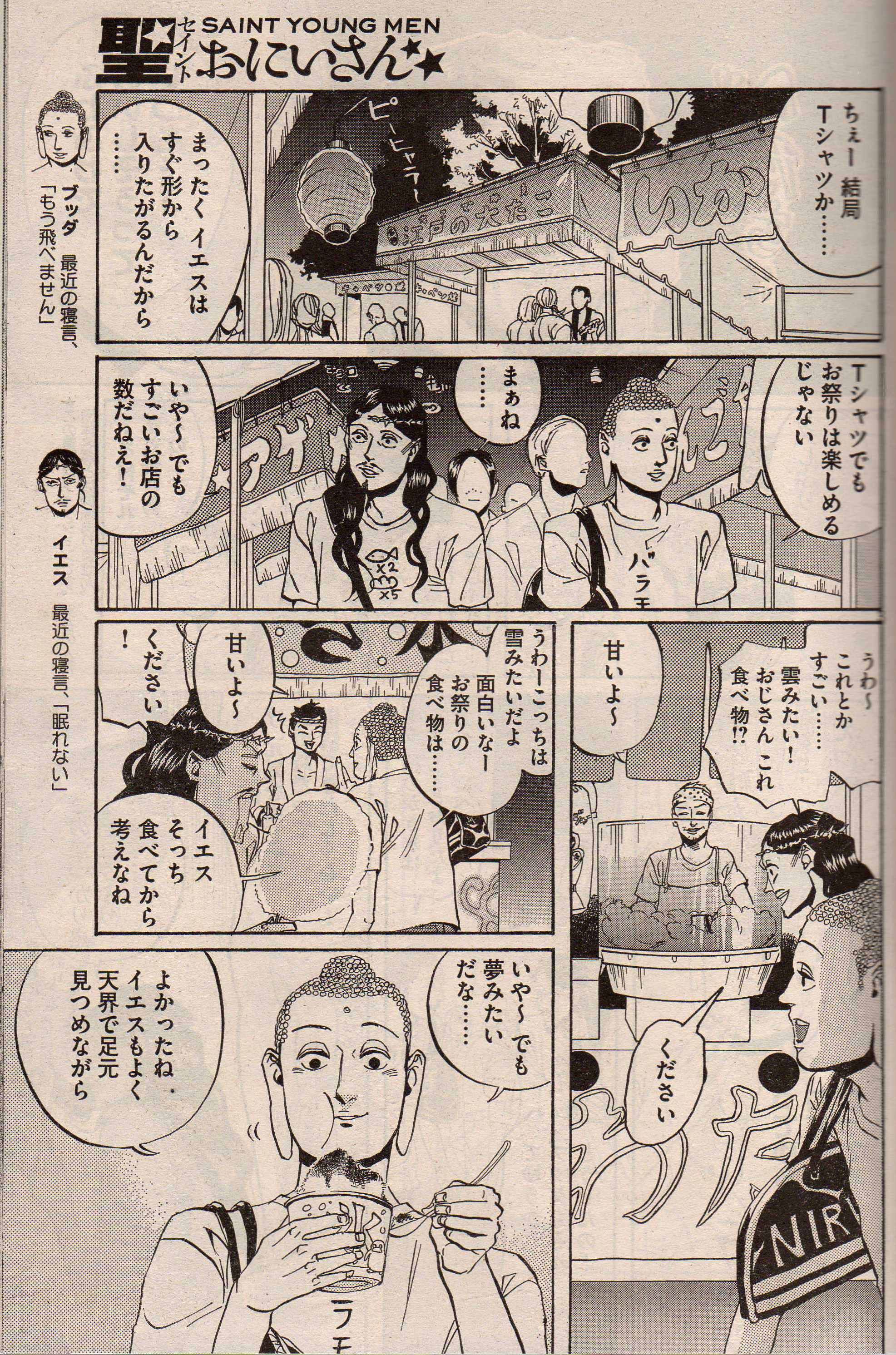
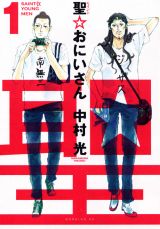 In a recent Unbound column at Robot 6, Brigid Alverson mentions books in what we might call the “Never gonna happen” category of comics from Japan… “culturally problematic series” “that are unlikely to ever be published in the U.S.” Brigid cited Hikaru Nakamura’s Saint Young Men as an example of this kind of book. While the logical part of my brain can accept that the publisher who tries to package this title for an English-reading audience has an uphill hike ahead of them, the part of my brain that is responsible for the vast majority of this blog’s content is reduced to muttering “want… want.. want…” with increasing fervor.
In a recent Unbound column at Robot 6, Brigid Alverson mentions books in what we might call the “Never gonna happen” category of comics from Japan… “culturally problematic series” “that are unlikely to ever be published in the U.S.” Brigid cited Hikaru Nakamura’s Saint Young Men as an example of this kind of book. While the logical part of my brain can accept that the publisher who tries to package this title for an English-reading audience has an uphill hike ahead of them, the part of my brain that is responsible for the vast majority of this blog’s content is reduced to muttering “want… want.. want…” with increasing fervor.
The premise sounds like a micro-joke that you might see on The Simpsons as the family talks about the new season debuts on Fox. Jesus and Buddha take a break from their lives as divinities to share an apartment in contemporary Tokyo and see what the simple folk do. So you’ve got not one but two presumably satirical renderings of religious figures right there, which is always a recipe for a long, unpleasant freak-out.
 MangaCast’s Kursten reviewed the first volume, and her take leads me to suspect that the series is of the oddly reverent variety rather than the scathingly satirical:
MangaCast’s Kursten reviewed the first volume, and her take leads me to suspect that the series is of the oddly reverent variety rather than the scathingly satirical:
“This manga is pure genius. The art may not be that exceptional or groundbreaking but the story is. I can probably understand some apprehensions in reading Saint Oniisan due to its religious implications, but the genius of the manga lies in how Nakamura manages to depict the two dieties in a real context without insulting their divinities.”
I think it sounds like a terrific series, with two divinities hanging out and experiencing the everyday (though not the sordid). Nakamura even gives them a bit of an Odd Couple twist: Buddha is frugal and kind of uptight; Jesus goes with the flow.
 It’s being serialized in Kodansha’s Morning 2, and by some weird coincidence (or miracle), I actually have a copy of an issue with two chapters in it, which is the source for the terrible scans included with this article. I suppose it’s possible in some distant future that Kodansha Comics might publish it in English, but perhaps we shouldn’t hold our breath waiting. Given the likely density of culturally specific references and remedial religious studies, along with the publisher’s demonstrated ability to manage them well, I’d vote for Del Rey to helm this one. They’ve published manga that seems like it should have been untranslatable, and Kodansha still seems to like them.
It’s being serialized in Kodansha’s Morning 2, and by some weird coincidence (or miracle), I actually have a copy of an issue with two chapters in it, which is the source for the terrible scans included with this article. I suppose it’s possible in some distant future that Kodansha Comics might publish it in English, but perhaps we shouldn’t hold our breath waiting. Given the likely density of culturally specific references and remedial religious studies, along with the publisher’s demonstrated ability to manage them well, I’d vote for Del Rey to helm this one. They’ve published manga that seems like it should have been untranslatable, and Kodansha still seems to like them.
And really, the definition of “Never gonna happen” is changing all the time. That goalpost has never been fixed, and it seems to shift a little bit month by month, year by year. I can buy Detroit Metal City at the mall if I want. Is Saint Young Men really that distant a dream?
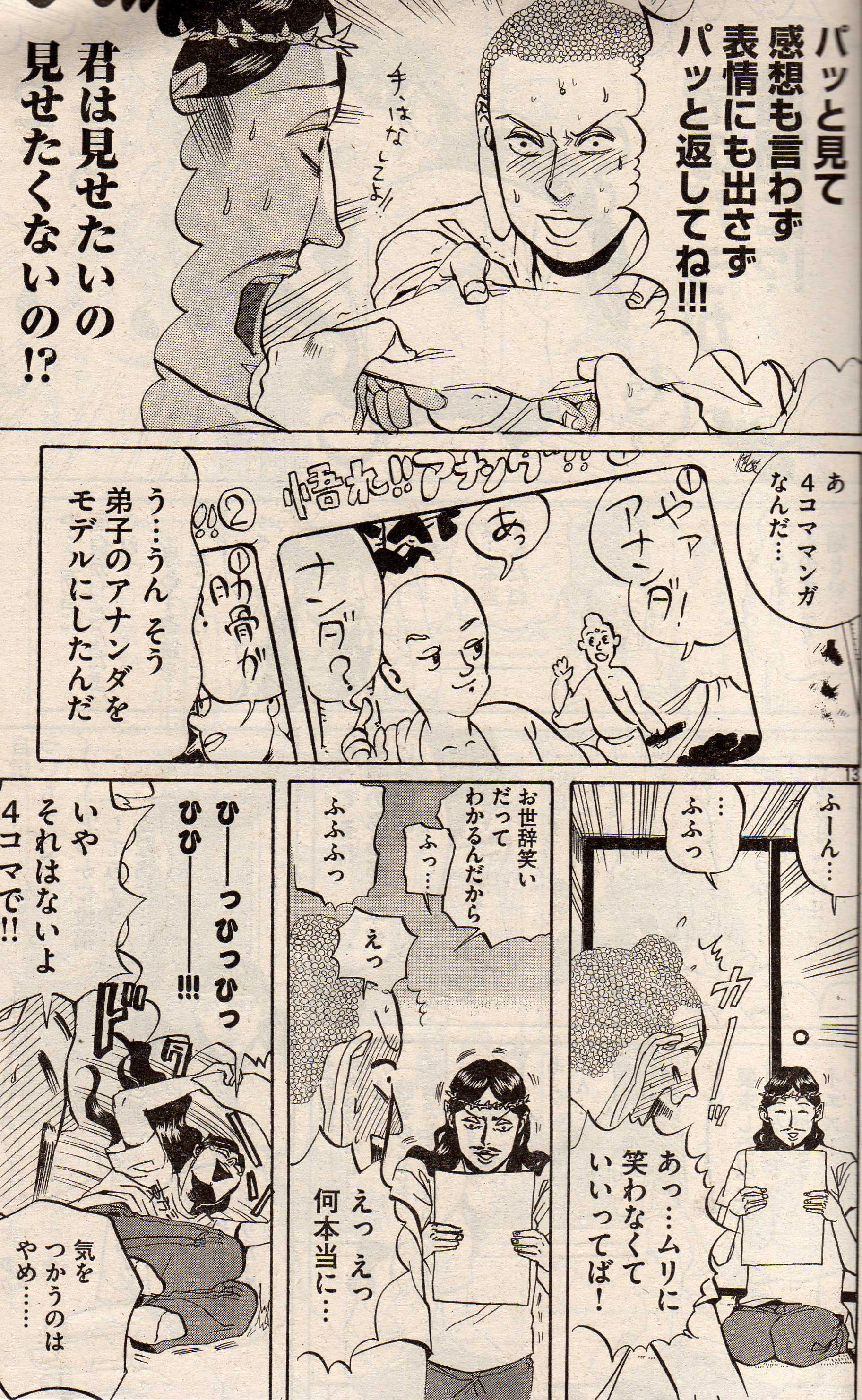
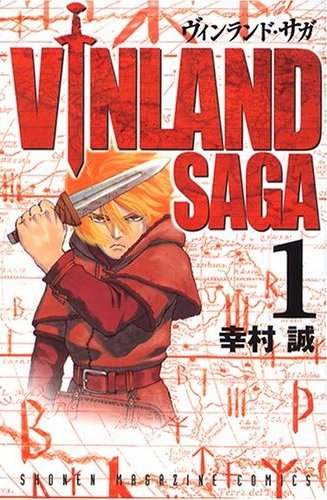 Now, Yukimura has also done evidently exemplary work in a category that I’ve somewhat neglected: action seinen. It’s called
Now, Yukimura has also done evidently exemplary work in a category that I’ve somewhat neglected: action seinen. It’s called 
 Now, fact-based head bashing doesn’t always fly off the shelves, but I have this suspicion that Vikings might be the next big thing in testosterone-driven docudrama. I could be wrong, and usually am, but if the Spartans could pull it off, who’s to say the Vikings can’t?
Now, fact-based head bashing doesn’t always fly off the shelves, but I have this suspicion that Vikings might be the next big thing in testosterone-driven docudrama. I could be wrong, and usually am, but if the Spartans could pull it off, who’s to say the Vikings can’t?
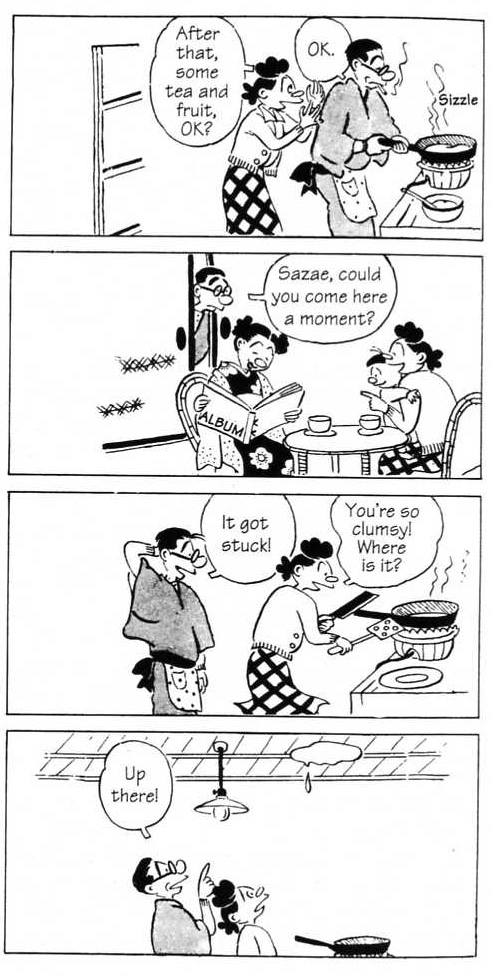



 As lovely as that sounds to me, I can easily picture a lot of the primary audience for manga in English recoiling in abject horror from the very idea. For me, that reaction just offers bonus points, but I know that doesn’t reflect a particularly commercial mindset.
As lovely as that sounds to me, I can easily picture a lot of the primary audience for manga in English recoiling in abject horror from the very idea. For me, that reaction just offers bonus points, but I know that doesn’t reflect a particularly commercial mindset. Like Shooting Stars won an Excellence Prize at the
Like Shooting Stars won an Excellence Prize at the 
 So I must ask some kind, forward-thinking publisher to give us a licensed version of
So I must ask some kind, forward-thinking publisher to give us a licensed version of  Everything I read about this series makes it sound more awesome to me. Well, almost everything, as
Everything I read about this series makes it sound more awesome to me. Well, almost everything, as 


 You know, just because moody blood-suckers are one of the current big things doesn’t mean this is the first time they’ve enjoyed that pride of place. Back in the day, Hagio was rocking out the vamps with her nine-volume series,
You know, just because moody blood-suckers are one of the current big things doesn’t mean this is the first time they’ve enjoyed that pride of place. Back in the day, Hagio was rocking out the vamps with her nine-volume series,  From what I can discern, there’s lots of angst about whether or not one actually becomes a vampire and, one presumes, tons of sexual tension between vampire and non-vampire cast members. Since it’s Hagio, I would assume that this sexual tension is not limited to mixed-gender couplings. Of course, I also would assume that, if the book featured moody boy vampires making cow-eyes at each other, somebody would already have licensed it.
From what I can discern, there’s lots of angst about whether or not one actually becomes a vampire and, one presumes, tons of sexual tension between vampire and non-vampire cast members. Since it’s Hagio, I would assume that this sexual tension is not limited to mixed-gender couplings. Of course, I also would assume that, if the book featured moody boy vampires making cow-eyes at each other, somebody would already have licensed it.

 So apparently someone has decided that the internet needs
So apparently someone has decided that the internet needs  Of course I’m talking about
Of course I’m talking about  This proves to be difficult, and the family decides to keep the kitten. While being housebroken, she mistakenly answers to ‘Chi,’ (the Japanese word for ‘small’, can also be ‘pee’) and this becomes her name. Chi then has a splendid time living with her new family, learning about different things and meeting new people and animals.”
This proves to be difficult, and the family decides to keep the kitten. While being housebroken, she mistakenly answers to ‘Chi,’ (the Japanese word for ‘small’, can also be ‘pee’) and this becomes her name. Chi then has a splendid time living with her new family, learning about different things and meeting new people and animals.” Okay, so it sounds like it’s
Okay, so it sounds like it’s  Morning is in the
Morning is in the 

 I don’t just want English versions of comics from Japan, you know. And since I seem to be casting my eyes towards France today, I’ll make it a theme and request… beg, even… that someone takes a crack at
I don’t just want English versions of comics from Japan, you know. And since I seem to be casting my eyes towards France today, I’ll make it a theme and request… beg, even… that someone takes a crack at  A few years later, I’m still particularly desperate.
A few years later, I’m still particularly desperate. 

 When writing this week’s Flipped, I surfed around for some information about
When writing this week’s Flipped, I surfed around for some information about  Clearly, awesome as Delinquent Girl Detective is as a title, it is merely a whisper of a hint of the absorbing lunacy of the series itself. Mentioning Sukeban Deka on Twitter led to a flurry of love for our yo-yo wielding gang girl gone undercover, most notably from
Clearly, awesome as Delinquent Girl Detective is as a title, it is merely a whisper of a hint of the absorbing lunacy of the series itself. Mentioning Sukeban Deka on Twitter led to a flurry of love for our yo-yo wielding gang girl gone undercover, most notably from  You should obviously click through to that previous review, if only for this faultlessly persuasive opening gambit:
You should obviously click through to that previous review, if only for this faultlessly persuasive opening gambit: Sukeban Deka was originally serialized in
Sukeban Deka was originally serialized in 